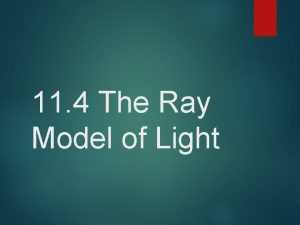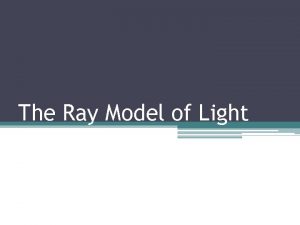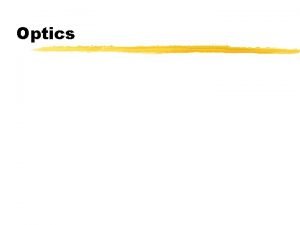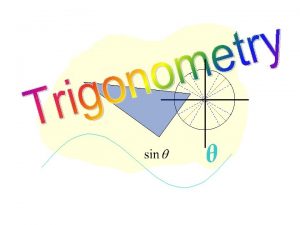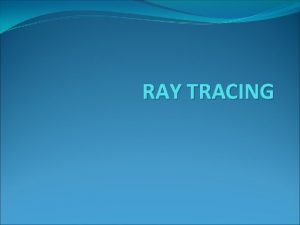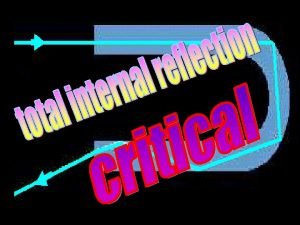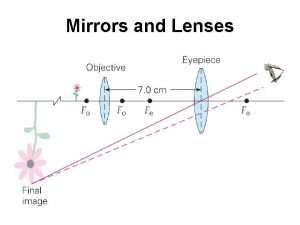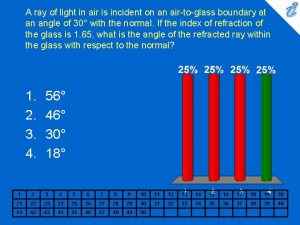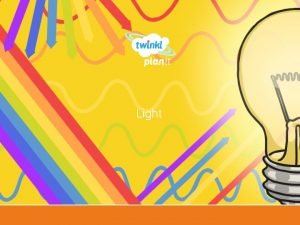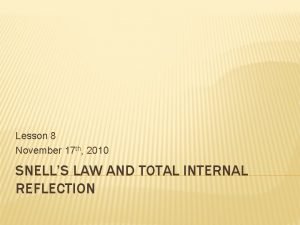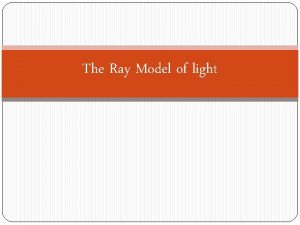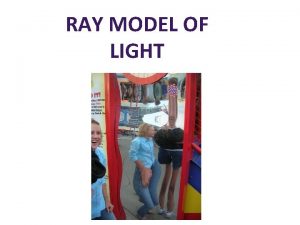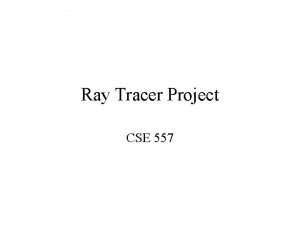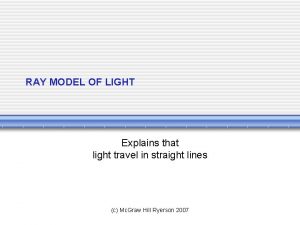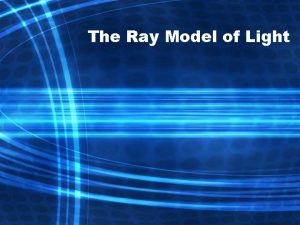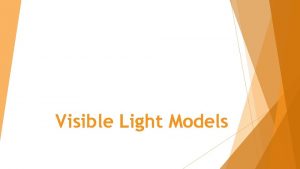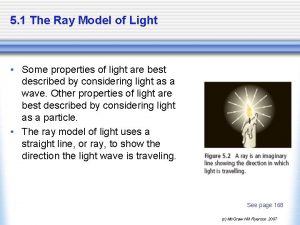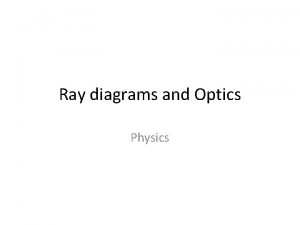5 1 The Ray Model of Light Some















- Slides: 15

5. 1 The Ray Model of Light • Some properties of light are best described by considering light as a wave. Other properties of light are best described by considering light as a particle. • The ray model of light uses a straight line, or ray, to show the direction the light wave is traveling.

Light and Matter • Different materials can either transmit, absorb, or reflect light. • Transparent materials allows light to pass through freely. • Translucent materials lets most light through but scatters the light leaving. • Opaque materials prevent light from passing through. See pages 169 - 170 (c) Mc. Graw Hill Ryerson 2007

Light and Matter (c) Mc. Graw Hill Ryerson 2007




Shadows • A shadow is created when an opaque object absorbs light rays. • Shadows demonstrate that light travels in straight lines. See page 171 (c) Mc. Graw Hill Ryerson 2007

Shadows • A ray diagram shows how the distance from the light source affects the size of the shadow an object makes. (c) Mc. Graw Hill Ryerson 2007

Light Can Be Reflected • Reflection is when light bounces off of an object. w To act like a mirror, the surface must be smooth. • The incoming ray of light is called the incident ray. • The ray that bounces off the surface is called the reflected ray. Incident ray Reflected ray See page 172 (c) Mc. Graw Hill Ryerson 2007

Light Can Be Reflected (c) Mc. Graw Hill Ryerson 2007

The Law of Reflection • The normal is an imaginary line perpendicular to the surface. • The angle of incidence is measured from the normal to the incident ray. • The angle of reflection is measured from the normal to the reflected ray. The angle of incidence equals the angle of reflection. See page 173 (c) Mc. Graw Hill Ryerson 2007

Light Can Be Refracted • When light travels from one transparent medium to a transparent medium it changes speed. w This change in speed causes the light to change direction. • The bending of light, due to a change in speed, is called refraction. • The angle of refraction is measured from the refracted ray to the normal. See page 174 (c) Mc. Graw Hill Ryerson 2007

Refraction of Light in Water and Air • Objects in water appear in a different location than they actually are. This is due to the refraction of the light. • Light refracts when it passes through air at different temperatures. w For example, a mirage is the light from the sky bending as it approaches the warm air near the ground. See page 175 (c) Mc. Graw Hill Ryerson 2007

Refraction of Light in Water See page 175 (c) Mc. Graw Hill Ryerson 2007

Refraction of Light in Air See page 175 Take the Section 5. 1 Quiz (c) Mc. Graw Hill Ryerson 2007
 Ray ray model
Ray ray model Light light light chapter 23
Light light light chapter 23 Light light light chapter 22
Light light light chapter 22 Light light light chapter 22
Light light light chapter 22 Two parts that make up most mirrors
Two parts that make up most mirrors The ray model of light
The ray model of light Ray model of transparent
Ray model of transparent The ray model of light
The ray model of light Terminal ray definition
Terminal ray definition Ray casting algorithm
Ray casting algorithm When light travels from an optically denser medium
When light travels from an optically denser medium Mirror and lens equation
Mirror and lens equation A light beam in air is incident upon a still water surface
A light beam in air is incident upon a still water surface Electromagnetic spectrum.
Electromagnetic spectrum. Warming ray of light
Warming ray of light A ray of light approaches a jar of honey
A ray of light approaches a jar of honey
